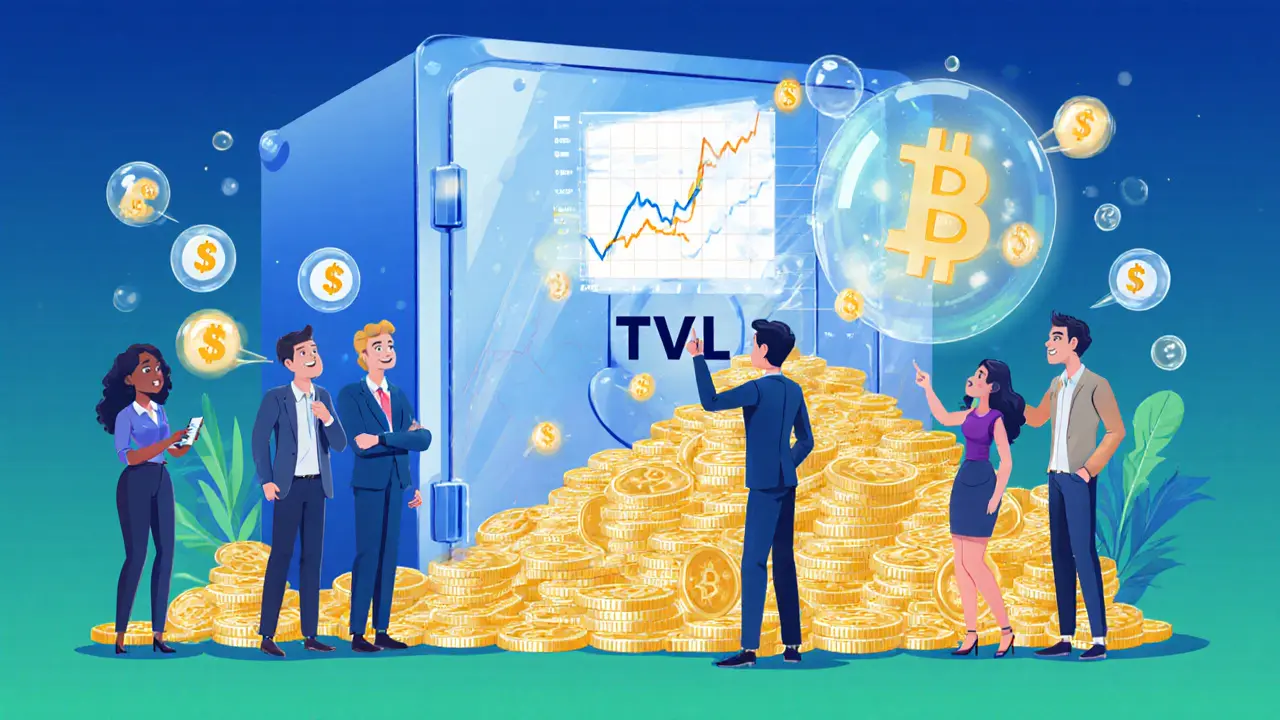Inflated TVL – What It Is and Why It Matters
When you hear about inflated TVL, an overstated Total Value Locked figure that makes a DeFi project look bigger than it really is. Also known as overstated TVL, it often results from double‑counting assets, locked tokens that can’t be withdrawn, or outright manipulation. Understanding inflated TVL helps you avoid projects that sound impressive but hide real risk.
To get a clear picture, you also need to know Total Value Locked (TVL), the sum of all assets locked in a protocol’s smart contracts. TVL is the baseline metric that investors use to gauge a project's size. A DeFi protocol, a decentralized finance platform offering lending, swapping, or staking services reports its TVL to attract users and capital. When a protocol engages in yield farming, the practice of locking tokens to earn extra rewards, the TVL can spike quickly, but the spike may be artificial if the rewards are funded by the protocol itself rather than genuine user demand.
How Inflated TVL Happens
Inflated TVL often starts with a simple trick: counting the same asset twice. For example, a protocol might lock a token, then issue a receipt token that it also counts as locked value. That creates a loop where the same dollars appear multiple times in the TVL calculation. Another method is to include tokens that are technically locked but can be withdrawn instantly by the developers, so the “locked” figure isn’t real. These tactics exploit the fact that TVL does not consider tokenomics or withdrawal restrictions – it just adds up numbers.
Because DeFi protocols rely heavily on yield farming incentives, they sometimes mint new tokens to boost rewards. When they count those freshly minted tokens as part of TVL, the metric balloons even though the underlying capital hasn’t changed. In other cases, projects create synthetic assets that mirror real ones and then lock both, inflating the total. The result is a misleading signal that can lure investors looking for high‑growth opportunities.
Another subtle driver is token price manipulation. If a protocol’s native token spikes in price, the TVL calculation (which often multiplies token amounts by market price) shoots up, even if the actual amount of capital hasn’t increased. Some teams even pump the token shortly before publishing TVL numbers to create a temporary “high TVL” snapshot.
All these tactics show a clear semantic triple: inflated TVL encompasses misreported liquidity. It also reveals that inflated TVL requires manipulated tokenomics. Finally, DeFi protocols influence TVL metrics by deciding which assets to count.
Recognizing these patterns is crucial because inflated TVL can mask other red flags, such as unstable tokenomics, high inflation rates, or a lack of genuine user adoption. A project that boasts a massive TVL but has a tiny active user base may be relying on these tricks to appear successful.
Investors who understand the relationship between TVL and actual liquidity can ask the right questions: Are the locked assets withdrawable by anyone? Does the protocol count its own reward tokens? How many unique wallets are interacting with the platform? Answers to these questions often reveal whether the TVL figure is genuine or inflated.
In practice, tools like on‑chain explorers and third‑party analytics can help you verify the numbers. Look for metrics such as “unique depositors,” “average lock duration,” and “withdrawal flexibility.” If a protocol’s TVL is high but these supporting stats are low, you’re likely looking at an inflated TVL scenario.
Beyond individual projects, inflated TVL can distort the broader DeFi landscape. Media outlets and market dashboards that showcase TVL rankings may inadvertently promote misleading projects, steering capital away from more solid opportunities. This cascade effect can inflate entire sectors, creating bubbles that eventually burst when the underlying numbers are corrected.
To protect yourself, treat TVL as a starting point, not a conclusion. Combine it with depth metrics, token distribution analysis, and a look at the protocol’s governance model. A well‑rounded assessment will expose whether a high TVL is backed by real user activity or just a clever marketing spin.
Below you’ll find a curated set of articles that dive deeper into specific cases of inflated TVL, show how to spot the signs in tokenomics, and explain the impact on airdrops, exchange reviews, and regulatory news. These resources will give you actionable insights to navigate the DeFi space with a clearer eye on what the numbers really mean.
How TVL Manipulation Inflates DeFi Metrics - What You Need to Know
Learn how TVL manipulation inflates DeFi metrics, spot red flags, and use alternative indicators to evaluate projects safely.





